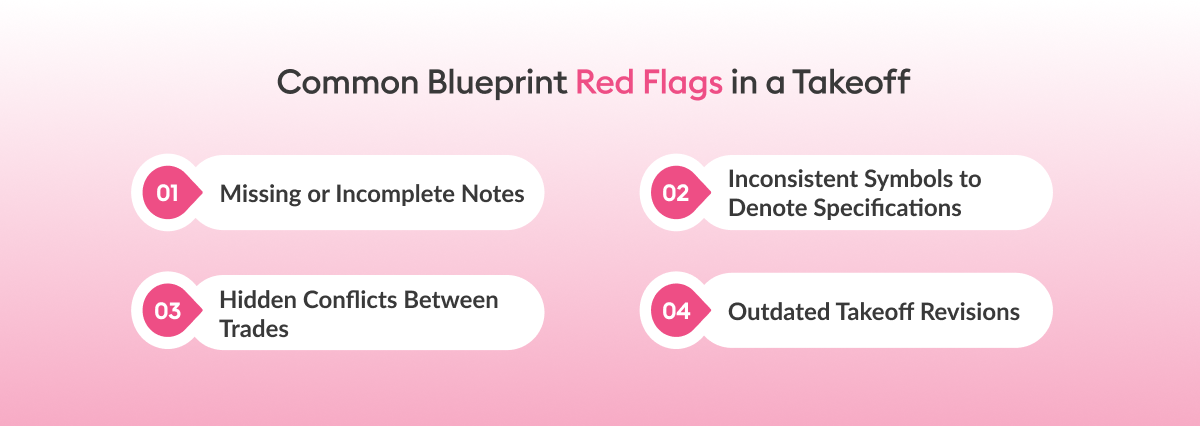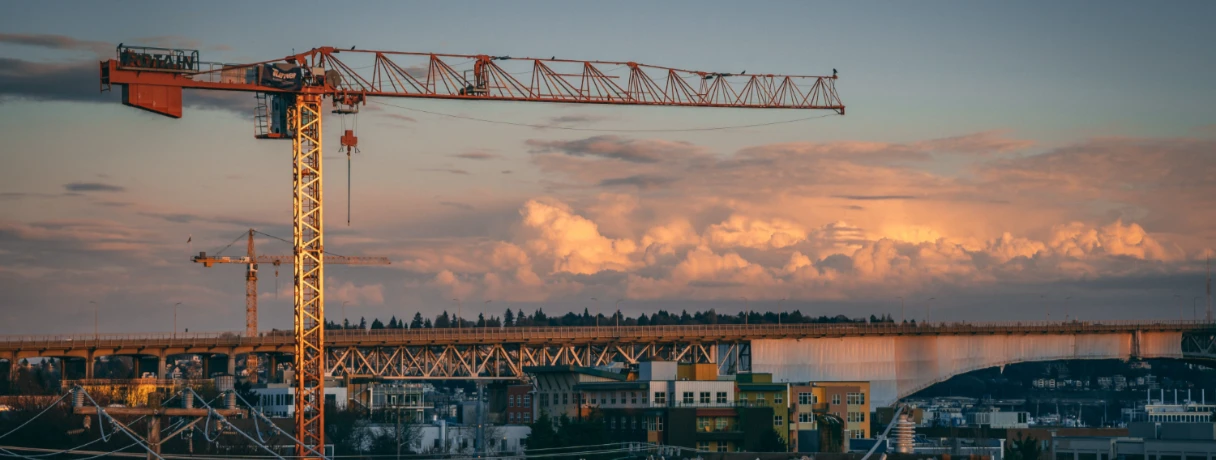Construction projects live and die by the accuracy of their plans. For estimators, the blueprint is not just a piece of paper—it’s the roadmap to a successful project. Overlooking even a small error can mean costly delays, budget overruns, or frustrated teams on-site. That’s why knowing how to spot blueprint red flags in takeoff is an essential skill for any estimator.
Let’s break down the common issues and practical ways to catch them before they turn into real problems.
Why Blueprint Accuracy Matters
Before diving into the red flags, it’s important to understand the stakes. Every quantity takeoff relies on accurate drawings. If the blueprints are off, even slightly, your estimates—and ultimately your bids—can be off by thousands of dollars.
Errors in the drawing stage may not seem urgent, but they ripple through the entire project. Misaligned dimensions, missing notes, or unclear symbols can lead to:
- Material shortages or over-ordering
- Schedule delays
- Rework on-site
- Contract disputes
Recognizing blueprint takeoff errors early keeps projects on track, ensures accurate bids, and prevents headaches for both the contractor and client.
Common Blueprint Red Flags in a Takeoff

Even experienced estimators encounter blueprint pitfalls. Here are the most common drawing issues to watch for during takeoff:
1. Missing or Incomplete Notes
Blueprints often include critical notes that affect construction methods or material choices. Missing or vague notes are a classic red flag. Examples include:
- Undefined wall finishes
- Unspecified beam types
- Missing details on electrical or plumbing layouts
Always double-check that all referenced notes are present. If something feels ambiguous, flag it before proceeding.
2. Inconsistent Symbols to Denote Specifications
Blueprints use symbols to convey information quickly, but unclear or inconsistent symbols are a red flag. Watch for:
- Symbols that don’t match the legend
- Conflicting symbols across different sheets
- Obsolete symbols from older drawing versions
Misinterpreting a symbol can lead to errors in material selection or installation.
3. Hidden Conflicts Between Trades
Many takeoff errors arise when drawings fail to coordinate between trades. For example:
- HVAC ducts interfering with plumbing runs
- Electrical conduits clashing with structural elements
- Conflicts between architectural features and MEP systems
Cross-checking plans from different trades can reveal these hidden conflicts before they impact construction.
4. Outdated Takeoff Revisions
Blueprints evolve, and older revisions often linger in plans. Using outdated sheets can lead to:
- Installing materials that are no longer specified
- Overlooking design changes
- Estimating quantities incorrectly
Always confirm that you’re working from the latest revision set and double-check the revision dates on every sheet.
How to Spot Red Flags Efficiently
Detecting blueprint red flags in takeoff requires a combination of experience, attention to detail, and a structured approach. Here are some practical tips:
1. Start with a High-Level Review
Begin by scanning the entire set of drawings. Look for inconsistencies in scale, missing sheets, or notes that don’t make sense in context. A high-level review helps you identify areas that need deeper scrutiny.
2. Use a Checklist
Create a takeoff checklist that covers common drawing issues:
- Notes completeness
- Dimension consistency
- Symbol clarity
- Revision verification
- Trade coordination
Checklists standardize the review process and reduce the chance of missing red flags.
3. Cross-Reference Drawings
Compare related drawings side by side. For example, architectural plans vs. structural or MEP plans. Look for conflicts or missing information. This is where most hidden errors show up.
4. Confirm with the Design Team
When in doubt, communicate. Reach out to architects, engineers, or project managers to clarify any ambiguities. Early clarification prevents costly mistakes downstream.
Real-Life Consequences of Overlooking Blueprint Red Flags
Ignoring takeoff blueprint errors can have serious consequences. Consider a scenario where a structural beam location is misread due to inconsistent symbols. The estimator orders the wrong quantity of steel, the foundation is poured incorrectly, and construction is delayed by weeks.
These errors are not just about money—they affect schedules, team morale, and client trust. Catching drawing issues early ensures smoother execution and protects both your reputation and your bottom line.
Conclusion
Blueprints are the backbone of every construction project, but they are only as reliable as the eyes reviewing them. Learning to spot blueprint red flags in takeoff—from missing notes to conflicting dimensions—can save time, money, and stress.
Blueprints are the backbone of every construction project-but only if reviewed carefully. Spotting blueprint red flags in takeoff ensures accuracy, prevents rework, and protects your reputation. With modern AI-based tools like Beam AI, you can detect errors early, collaborate better, and bid with confidence. Book a demo today to see how smarter takeoffs lead to stronger wins.

.png)









.webp)


.webp)

